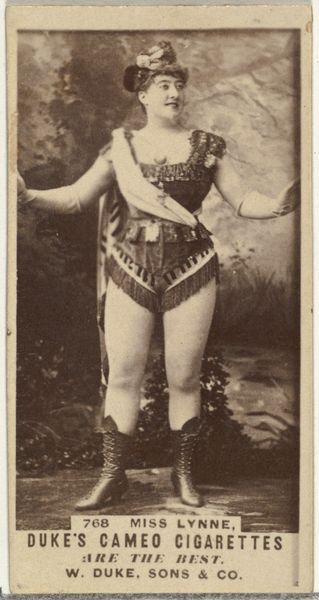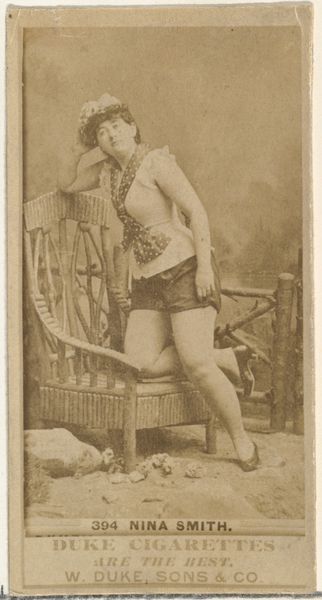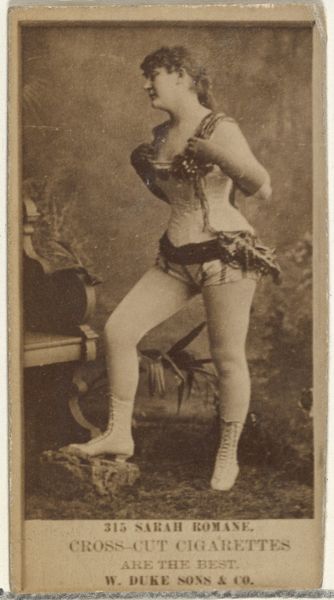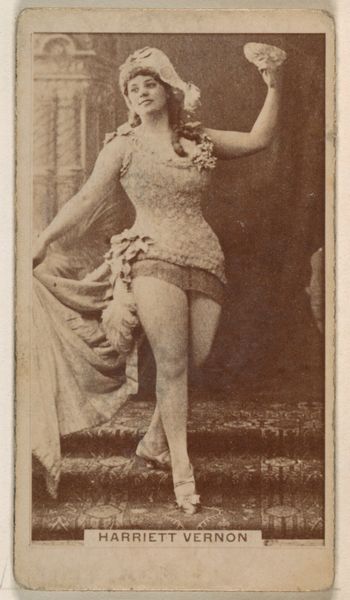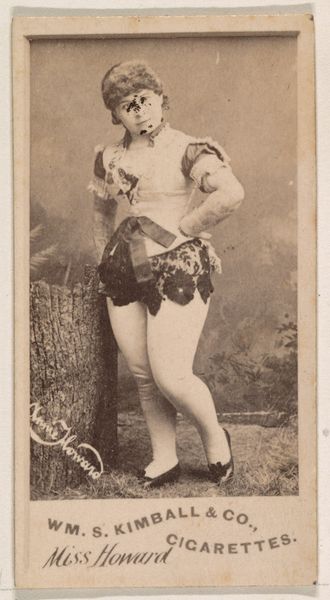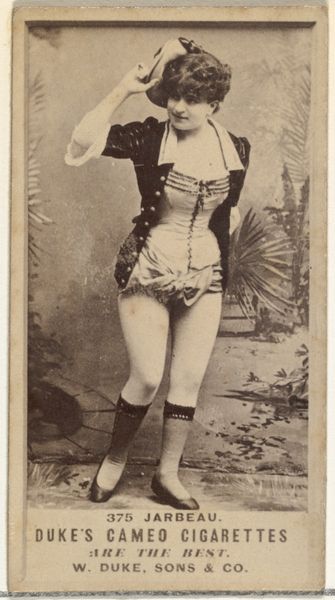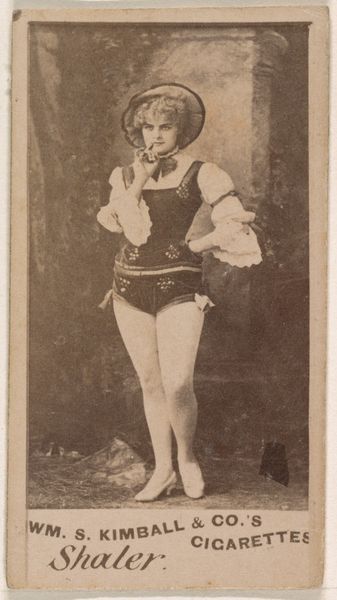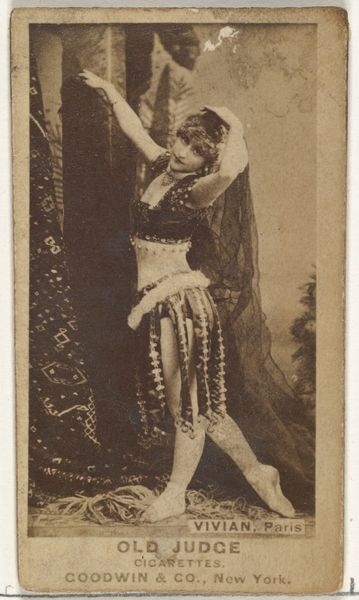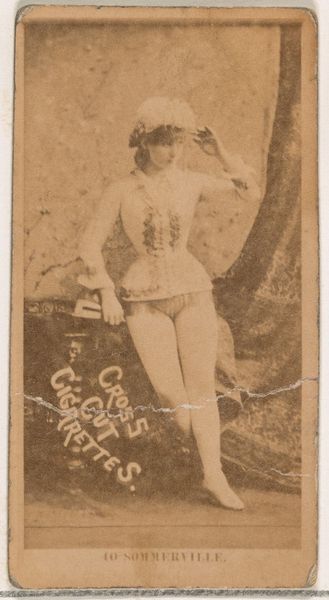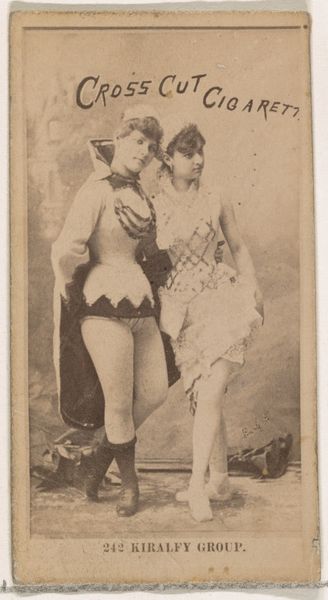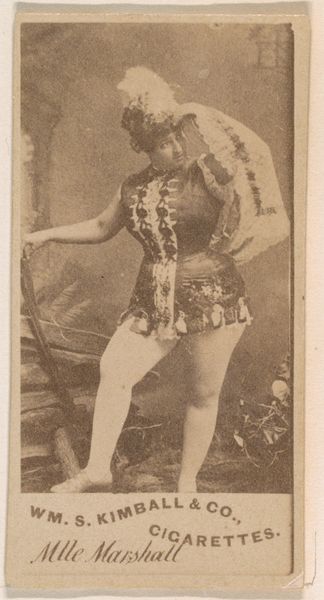
Miss Lynne, from the Actresses series (N203) issued by Wm. S. Kimball & Co. 1889
0:00
0:00
drawing, print, photography
#
portrait
#
drawing
# print
#
photography
#
19th century
#
nude
#
erotic-art
Dimensions: Sheet: 2 5/8 × 1 3/8 in. (6.6 × 3.5 cm)
Copyright: Public Domain
Curator: This is “Miss Lynne, from the Actresses series (N203) issued by Wm. S. Kimball & Co.,” dating to 1889. It is currently held at the Metropolitan Museum of Art. What’s your initial impression? Editor: The image has this… dreamlike quality. It's both titillating and slightly unsettling. The grayscale and blurring make it feel distant, a memory trying to surface. The angle gives me an unexpected sense of voyeurism; as though I’ve interrupted the actress backstage. Curator: Interesting point. The image itself is a print derived from photography and drawing. Consider the dual nature of its production - mass distributed within cigarette packs by Wm. S. Kimball & Co., these series blurred the boundaries between fine art, advertising, and personal collectables. What kind of cultural labor and exchange do you imagine produced images like this at the time? Editor: Cigarette packs… wow, talk about mass consumption shaping artistic expression! To imagine that erotic art might come packaged with nicotine, framed as a commercial commodity. The appeal is obvious, of course – an intimate glimpse into female beauty marketed broadly across the 19th-century United States. And the woman, Miss Lynne, posed this way feels defiant despite it all. A subtle subversion embedded in this act. I think about the exchange of looks here, from actress to photographer, brand manager to the cigarette consumer... and eventually, from model to artwork. Curator: It is a striking moment. Consider, too, the performative labor that went into capturing this image; to capture that supposed immediacy must have entailed many hours of skilled labor both in front of and behind the camera. And, naturally, that labour happened within social contexts we may no longer even recognize. This wasn’t high art designed to be hung on walls or sold at galleries; it had a different kind of accessibility and, thus, a different audience, as it made its way through shops and into pockets across America. It raises intriguing questions. Editor: You're absolutely right. Looking at it again, the composition isn’t so much "nude" as "backstage"—suggesting an actress in-between roles. Almost a study of character through pose and performance. I find myself looking past the product itself toward a quiet, fleeting feeling that the artist or photographer captured a whole world around this specific model, Lynne. I love these unexpected perspectives. Curator: Absolutely, those are the kind of rich details that emerge when we begin thinking about material origins. Thank you!
Comments
No comments
Be the first to comment and join the conversation on the ultimate creative platform.
